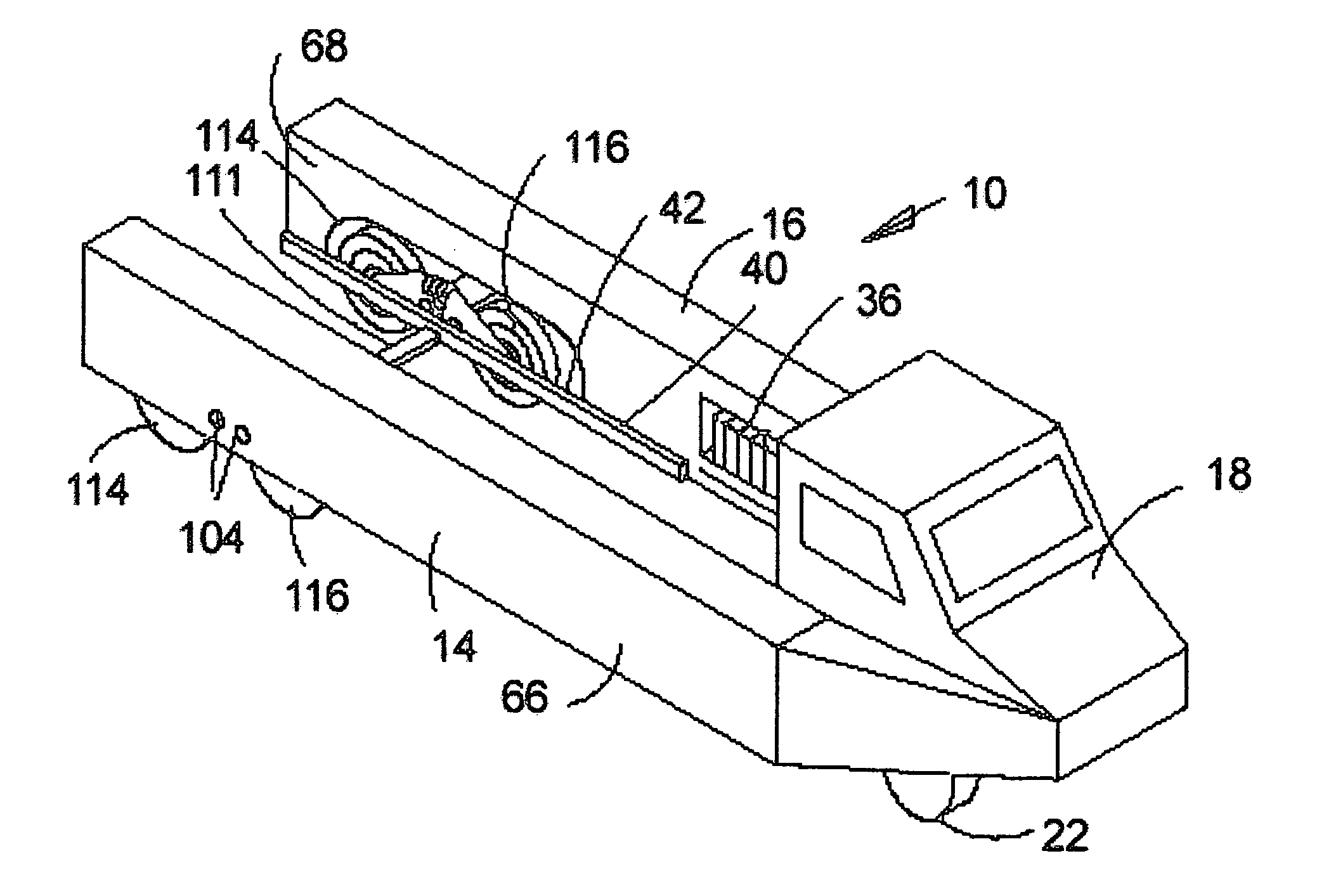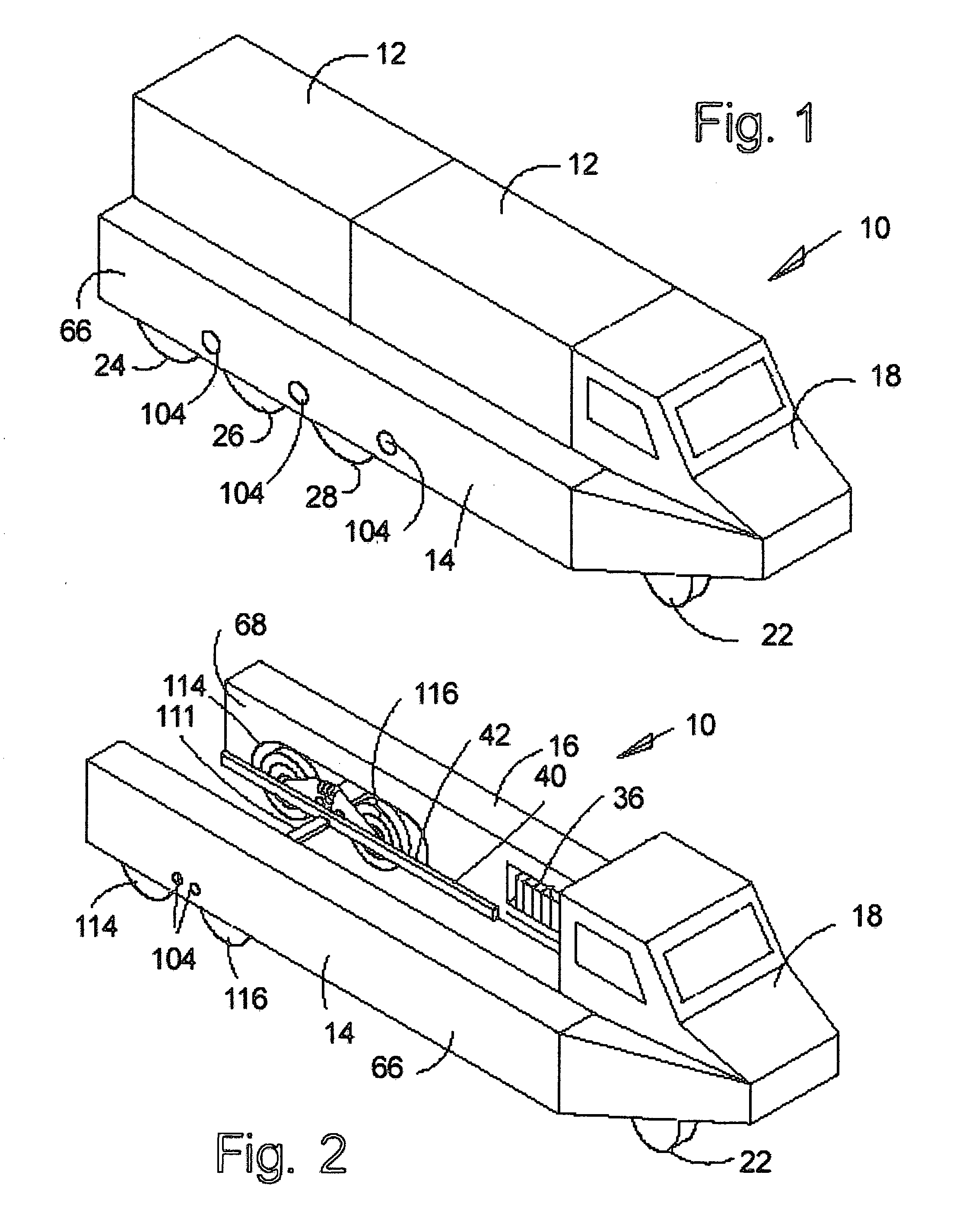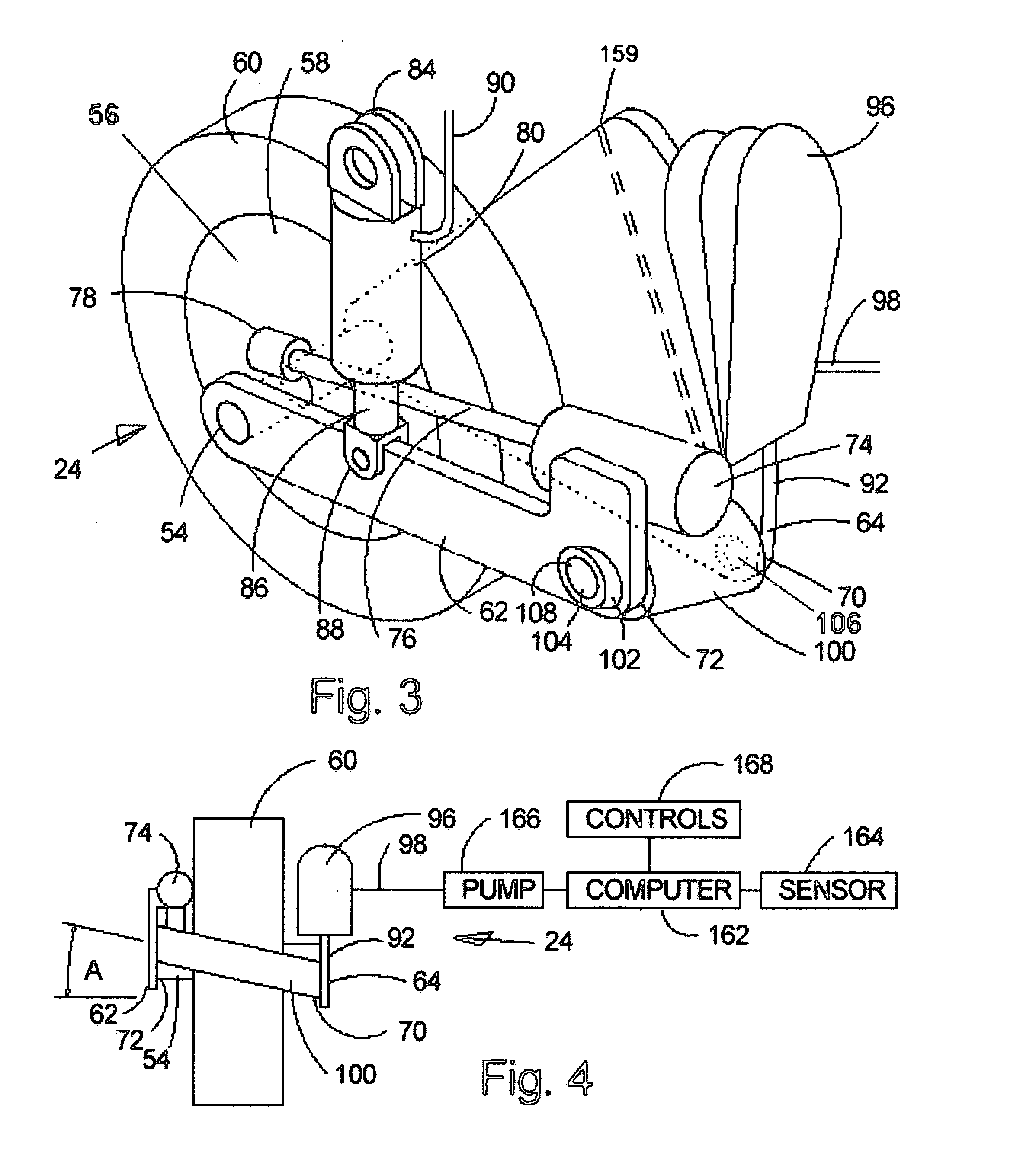[0010] The vehicle for placing railcars on railway tracks of my invention comprises a U-shaped frame with flexible side structures or beams which may be made of
crash absorbent material and equipped with an adjustable toe-angle, variable height suspension. Railway vehicles are attached between the side structures or beams of the vehicle. The variable height front and rear suspension allows railway vehicles to be lifted off the tracks. The rear suspension also has a variable toe angle to control the spread of the flexible beams so it can back around a railway vehicle and then squeeze or grasp the vehicle so that it can be tightly secured while being lifted.
[0011] The vehicle for placing railcars on railway tracks has a wider than normal wheel base, low center of gravity, and
crash absorbent side structures which will significantly improve highway safety. Heavy batteries for regenerative braking can be installed in the side structures to enhance
crash absorbency. The variable height rear suspension of the vehicle may have a trailing beam design. Rear wheel axles can be mounted on one trailing beam or arm (like an
aircraft landing gear), or two beams or arms (like the rear wheel of a mountain bicycle or motorcycle). Regardless of the number of arms, the angle of the pivot where the trailing arms are attached to the side structures of the vehicle is not level with the ground. The pivot bearing is angled so that the outer end is higher than the inner end so that when the vehicle is lowered close to the ground, the rear wheels develop slight toe-out and when the vehicle is raised above its normal
ride height, the rear wheels develop slight toe-in. Thus, when the vehicle is lowered close to the ground, the side structures or beams spread apart when driven forward and toward each other when driven in reverse to allow the grasping and releasing of railway vehicles carried between the beams. When the vehicle is raised to a higher than normal
ride height, the rear wheels develop toe-in and the side structures or beams of the vehicle spread apart when driven in reverse to steer around the front of a railway vehicle prior to lowering the vehicle to grasp it. They can also squeeze railway vehicles when driven forward to help secure them during an off road collision avoidance maneuver. A control means similar to the
joystick of an
airplane alters the height of the vehicle through a computer. By controlling ride height and direction, the driver can spread the side structures apart or pinch them together at will to grasp and release railway vehicles.
[0012] An improvement over my prior art is increased facility to precisely control the vehicle's lean or angle of tilt using a superior control means such as a
joystick. This allows the wheels of railway vehicles to be placed on one track at a time—a feature not needed on vehicles used primarily for lifting intermodal shipping containers. Moving the
joystick to the side leans the
truck and at the same
time changes the toe angle of the rear wheels so that as the
truck leans, the rear wheels are made to steer in the same direction rather than developing toe-in or toe-out as happens when the height of the vehicle is changed. By steering with the rear wheels as well as the front, the vehicle can be made to move in a
diagonal direction across the track while the vehicle itself is aligned with the track, thus allowing more than one rail axle to be engaged with a rail simultaneously.
[0013] One knowledgeable in the art will recognize that whenever wheels mounted on articulated bogies are misaligned, tilting a rail vehicle will cause the wheel lower to the ground to also be closer to the track, thus if the lower wheel of a
bogie is correctly positioned on a rail, the other wheel(s) on the same side of the
bogie can be brought into proper position on the same rail by lowering the entire vehicle while simultaneously moving it toward the rail, causing the
bogie to swivel into proper alignment. All of the wheels on one side of a multi axle rail vehicle or group of rail vehicles can thus be placed on one rail at once, despite being mounted on articulated rail-trucks or bogies that may not initially be aligned with the tracks. A
video camera is provided underneath the cab of the
truck so that the operator can see if the wheels are correctly positioned and, if necessary, make necessary corrections by moving the joystick and the vehicle's
steering wheel to obtain proper alignment. The vehicle is equipped with a further control means such as special joystick buttons to operate the front and rear suspensions independently or differentially to control the fore and aft
pitch of the vehicle in much the same way as
pitch is controlled in an aircraft. The vehicle's
steering wheel, similar to that of ordinary trucks, can be turned to adjust the
yaw of the vehicle with respect to the track, thus the vehicle can be precisely oriented on three axes independently of the direction of the vehicle's travel. Once all of the wheels on one side of a rail vehicle or group of rail vehicles are positioned on a rail, one skilled in the art will recognize that the wheels on the other side of the rail vehicle(s) will automatically be aligned with the other rail. The control means or joystick can then be moved to a
neutral position to level the rail vehicle(s), thus causing all of the rail wheels to become mounted precisely on the track. This is an improvement over the prior art because the entire operation can be performed in less than a minute without auxiliary equipment such as springs or other mechanical means to bring the rail trucks or bogies into alignment.
 Login to View More
Login to View More  Login to View More
Login to View More 


